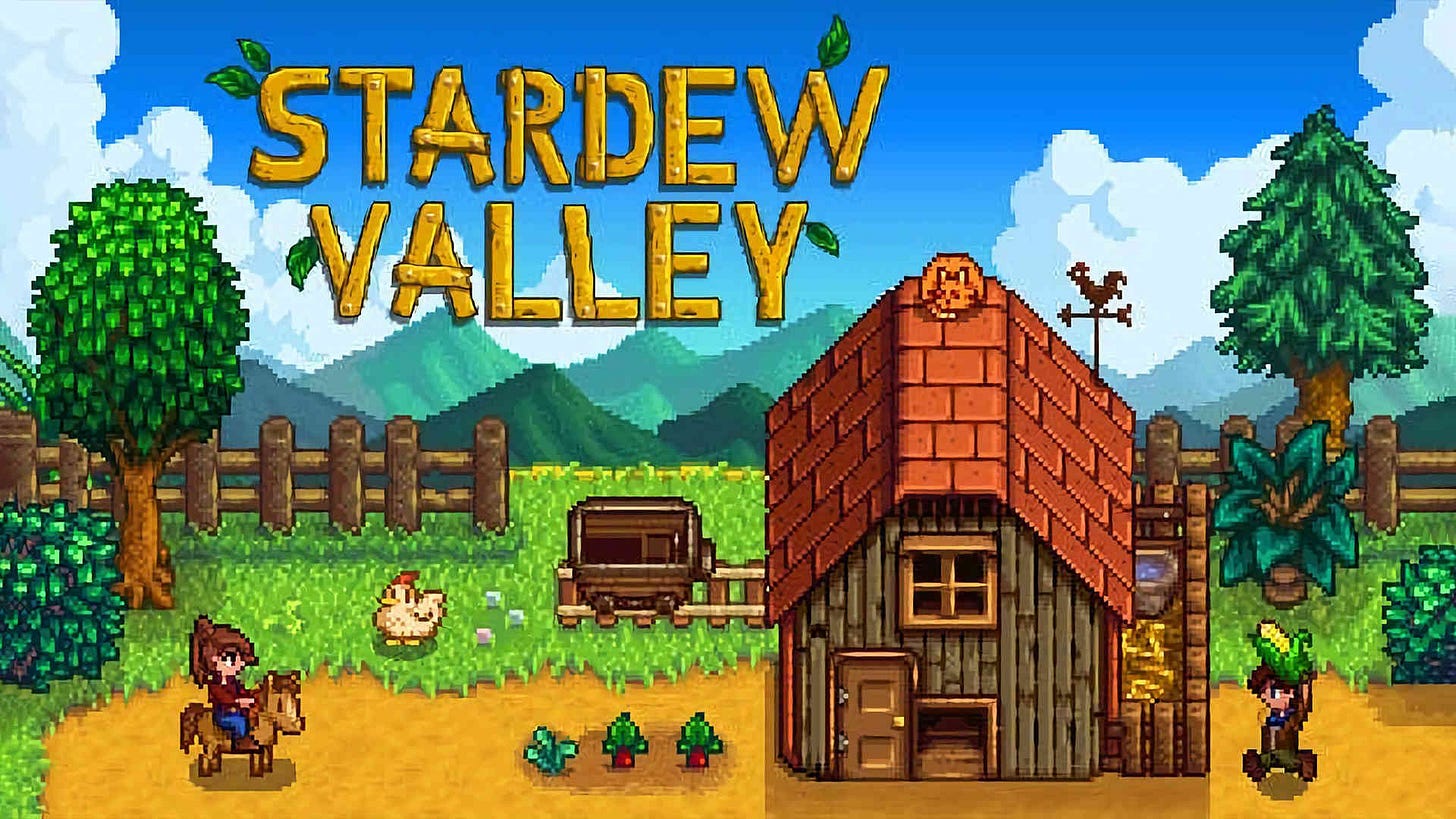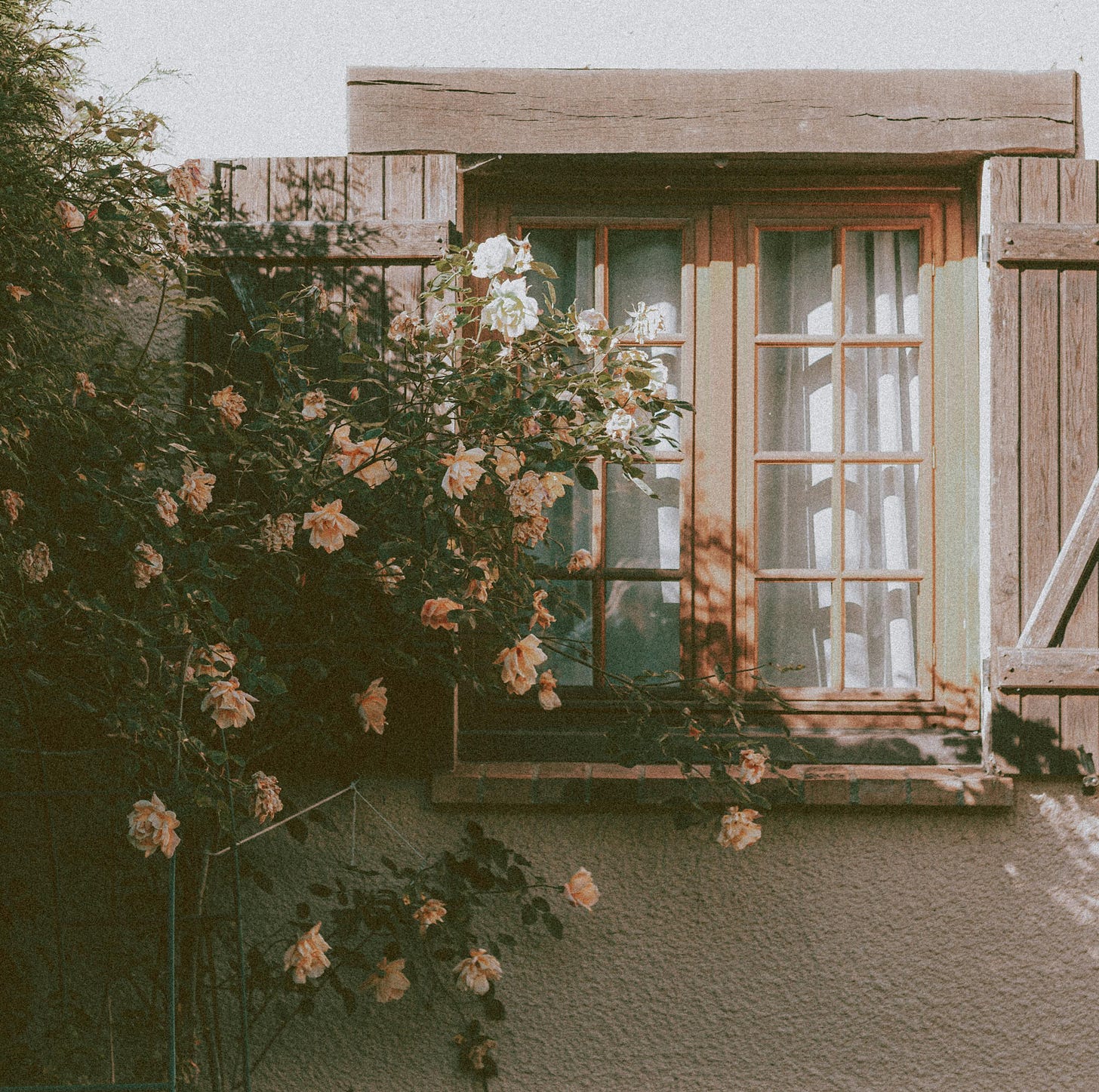The false dream of Cottagecore
How the problematic romanticization of Western rural life reveals our discontent with the modern world.

They paint it in pastel hues — soft sunlight dappling through leaves, rough hands kneading dough, the scent of apple pie promising a sweetness modern life cannot deliver.
Cottagecore, a trend and aesthetic flooding social media, whispers of a world where time bends to the primal rhythm of seasons, where the greatest anxieties are centered on weather and the turning of the harvest. An escape from the fluorescent buzz, the endless scroll, the gnawing sense that somewhere along the way we took a very wrong turn. Stardew Valley, a pixelated video game version of this ideal world, swept up masses of the disillusioned young and showed them precisely what could be. The game, created by the toiling hands of a single programmer (this itself an anti-capitalist statement), sold more than 30 million copies. I’m a huge fan, I admit.
In our age of late-stage capitalism, it’s no wonder this romanticized, highly simplified vision of rural life has found a home in the hearts of so many. Cottagecore, as all trends do, emerged from the niche corners of the internet, blossoming on platforms like Tumblr and Reddit (where it inspired young women in particular), before permeating mainstream aesthetics. It’s a rebellion against the mainstream, however soft — against the relentless demand for productivity, the pressure to optimize oneself into a marketable commodity, those sterile landscapes of concrete and glass that leave the soul parched. In a world that values hyper-connectivity and constant output, it promises the radical luxury of… simple living.
Commodification and the longing beneath
Being the clever and narcissistic predator it is, capitalism has learned to commodify yearning and any and all opposition to its ideological monopoly. Tutorials for ‘simple’ tasks like soap-making and embroidery proliferate on YouTube, alongside countless shops selling linen dresses that evoke a romanticized past and rustic kitchen gadgets promising the warmth and authenticity store-bought food and brands can never match. It’s the usual paradox: fleeing the machine by purchasing its carefully manufactured illusion of escape.
Yet there's a genuine ache beneath the curated Instagram images, an ache that speaks to a truth capitalism works tirelessly to obscure: we were not meant for this. Not for the cold hum of office lights and screens, the endless chase for more that can result only in emptiness, the manufactured anxieties that keep us running on the hamster wheel of consumption. Our ancestors might envy our physical comforts, but would they understand this incredible spiritual hunger no amount of material acquisition can soothe?
On simple living
The yearning embodied by Cottagecore, however flawed its expression (think traditional gender roles), ties into the broader philosophy of ‘simple living.’ This movement, with roots in various spiritual and environmentalist traditions, advocates for a conscious rejection of consumerism, a re-prioritization of experience over possession, and a profound connection to the natural world. As Henry David Thoreau, that prophet of the self-reliant life, wrote in Walden: “Simplify, simplify, simplify!”
Yet true advocates of simple living would scoff at the commodified versions peddled online. There’s a common thread, yes — a recognition that modern life, fueled by an economic system that demands endless growth, is fundamentally at odds with human flourishing, community, happiness, and nature — but little else. Capitalist realism is so terrible, so magnificent, so all-encompassing precisely because it possesses this unique ability to constantly re-iterate and adapt itself. Cottagecore, first and foremost, is celebrated by buying things and showing them off on social media. This is not simple living. This is not change. This is nothing but more entertainment and hedonist distraction.
Sanitized fiction and a flicker of something real
The Cottagecore dream is a sanitized fiction of Western rural life. The reality of that life was often harsh — quasi-feudal labor from dawn till dusk, the ever-present threat of disease, and, most important of all (at least to me), the crushing weight of tradition that left little room for individual expression outside of rigidly prescribed roles. Seemingly empowered women, so often idealized in Cottagecore aesthetics, had few choices: a prison until marriage, then a prison within it, their lives circumscribed by men who held all social and economic power.
Still. There’s a flicker of something real in Cottagecore however distorted by capitalism and patriarchal structures. The longing for a tangible connection with the natural world, for the satisfaction of creating something with one's own hands, for a sense of community and shared purpose that modern individualism has eroded. These are deeply human needs that our current system cannot fulfill. Yet instead of resorting to useless and most often false nostalgia, we could begin by changing the status quo and building anew. Bring out the guillotines, I say! Only then can the dream become reality.
All revolutions begin with a certain restlessness
The Cottagecore fantasy offers a false remedy to a cancer that cannot be defeated by means from within. True liberation does not lie in retreating to an altered past, but in forging a future in which the fruits of technology (such as AI) are shared equitably, where work is a means of fulfillment rather than a source of exploitation, where connection to nature and one’s own creative spirit are seen as universal rights, not luxuries reserved for those who can afford the aesthetic.
Perhaps the true power of Cottagecore lies not in its idyllic images, but in the discontent it reveals — the widening chasm between the world as it is and the world as it painfully should be. In that gap lies a question more potent than any recipe for sourdough or hand-stitched apron: How do we build a life truly worth living, one that honors the wisdom of times past and harnesses the tools of the present to create a future in which human flourishing, freedom, and care for nature are the ultimate goals? The answers won’t be found in sepia-toned Instagram feeds, but in the kind of collective action and radical re-imagining that makes the powerful tremble. Thoreau once said, “The mass of men lead lives of quiet desperation.” Why just accept this?
Cottagecore may be a fairy tale. But all revolutions begin with a certain restlessness, a desire for a world more beautiful, more just, than the one we were handed. Perhaps the soft-focus dreams of flowers and pies whisper of a ferocity yet to be fully unleashed. We will see soon enough, won’t we?
Antonio Melonio
You can also support my pursuit of freedom and self-determination on Patreon (starting at $2 a month), or leave a tip on PayPal. Thank you so much.
What to read next:











While American culture is historically patriarchal, its present and future doesn’t have to be. Consider indigenous cultures. They are very much cottagecore-like while also having a crucial and fulfilling place in their societies for all who were a part of them. This cottage core dream you describe does not have to be an illusion.
Well, I live in a cottage (in a rural area), and am married to an uber-gardener (so lots of flower and vegetable gardens), but I didn't even know there was a name for our style. It's just an aesthetic, not a radical lifestyle.
Small but beautiful, it still takes a lot of time, probably too much time for a young family with commutes and kids at home. We are retirees though, so it's fine for us.